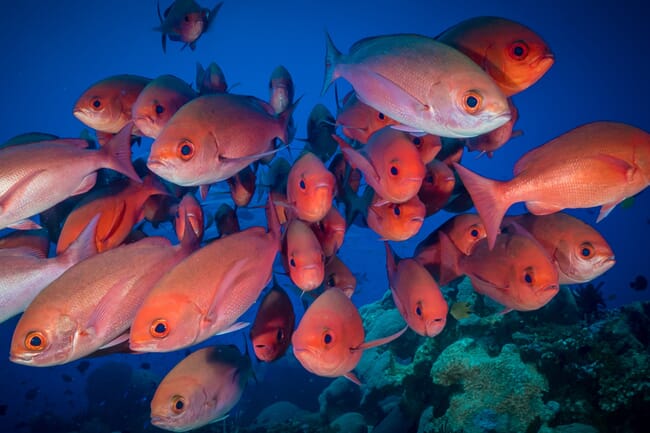
Singapore relies heavily on food imports to meet national consumption, with over 90 percent of the country's food being coming from external sources. In order to increase its self-sufficiency, and reduce its reliance on international markets, Singapore has ambitious goals to sustainably produce 30 percent of its nutritional needs by 2030.
Within this context, seafood has been identified as a priority area for development, with red snapper being a particularly important aquaculture species within the country due to its high value and consumer acceptance. Despite the importance of the species, however, no specific commercial feeds exist which cater to red snapper farming - largely due to a lack of research into the nutritional requirements of the species.
In light of this, a research team consisting of researchers from James Cook University (JCU) and Republic Polytechnic have recently conducted a study investigating the nutritional requirements of red snapper. The team also attempted to develop a sustainable, locally produced feed based on these requirements. The research project, titled "Optimising Feeds for Singaporean Red Snapper Aquaculture," was carried out in collaboration with the Singapore Food Agency and Metropolitan Fishery Group, with funding from the Singapore Food Story Research and Development Grant.
“Current production of the red snapper locally relies mainly on generic marine fish feeds, which can only provide a basic level of nutrition needed by red snapper for growth. Moreover, these commercial feeds typically contain high levels of fish meal and fish oil, leading to increased feed costs,” explained project lead Associate Professor Xueyan Shen, in a press release.
“Through a comprehensive assessment of the nutrient utilisation and requirements of the carnivorous red snapper, we determined that the fish has a low ability to utilise carbohydrates in its diet as the primary energy source for growth. Whereas the energy utilisation of protein and lipid for growth was found to be approximately 70 percent. These findings, advocate for a protein-rich diet to optimise the red snapper’s growth performance,” added Shawn Ngoh, a PhD student who worked on the project.
The experimental feed developed by the researchers based upon their findings proved a resounding success, with plant-derived ingredients in some cases leading to at least 50 percent faster growth compared to those fed with commercial diets. Overall, the team expects cost savings of at least 20 percent for every 1kg of fish produced under the new feeding regime.
Looking ahead, the best-performing feed formulations have been utilised for optimal feed development for grow-out fish. Following on-farm trials coordinated by Republic Polytechnic, the feeds will subsequently be licensed for commercial production. Leveraging partnerships with overseas feed mills, these formulations will be made available to local farms at competitive prices.
“By developing tailored feed formulations based on robust scientific understanding, the team aims to drive positive change and industry growth in the farming of red snapper in Singapore, benefiting both local farmers and consumers,” said JCU Professor Dean Jerry.




